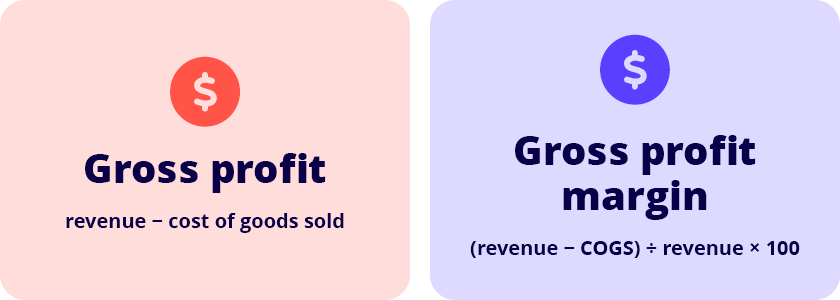GLOSSARY
What is gross profit?
Gross profit is the profit you make by selling your goods or services, after deducting the cost of goods sold. Cost of goods sold (GOGS) refers to the money and resources required to produce your goods or deliver your services.
How to calculate gross profit
The gross profit calculation formula is as follows:

Why do you need to know your gross profit?
Knowing how to calculate gross profit is a great way to better understand how efficient you are in utilising your labour and supplies to produce a profitable offering.
This metric allows you to drill down into your goods or services and discover how profitable each offering is. You can then identify ways to be more cost-efficient in producing your goods or delivering your services.
Cost of goods sold explained
In business, you can deduce the figure for your cost of goods sold by adding up the direct expenses of producing, handling, and delivering your commodities or services.
Interestingly, cost of goods sold generally includes variable but not fixed costs.
Gross profit versus net profit
While your company’s gross profit only accounts for your cost of goods sold, net profit considers all the necessary expenses to run your business and produce revenue.
Although gross profit includes labour and production costs, your net profit goes further—to include everything from electricity bills to business devices.
What’s a gross profit margin?
Your gross profit margin expresses your gross profit as a percentage.
The gross profit margin formula is as follows:
Gross profit margin = (Revenue – COGS) / Revenue x 100
See related terms
What Is gross profit?
Gross profit Vs net profit
What is a balance sheet?
What is working capital?
Additional resources
Try Reckon One now for free!
30 days free trial. Cancel anytime.
